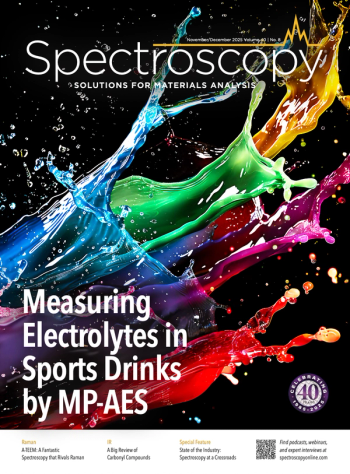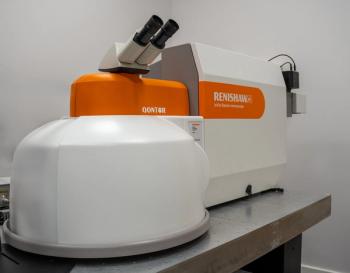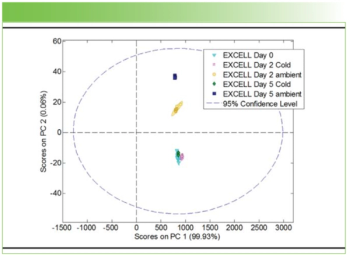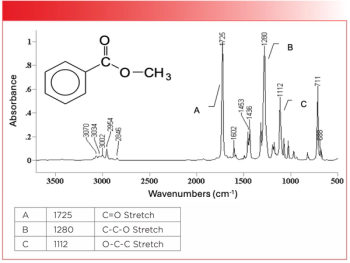
A recent study demonstrated that hyperspectral imaging offers a highly accurate, dramatically faster alternative to traditional FT-IR methods for identifying microplastics in the Po River.

A recent study demonstrated that hyperspectral imaging offers a highly accurate, dramatically faster alternative to traditional FT-IR methods for identifying microplastics in the Po River.

Patrick Parsons of the New York State Department of Health previews his upcoming talk at the Winter Conference on Plasma Spectrochemistry.

Hunter Andrews, an R&D Staff Scientist at Oak Ridge National Laboratory, discusses what he is looking forward to at the Winter Conference on Plasma Spectrochemistry.

Gerardo Gamez, a Professor and Graduate Advisor at Texas Tech University, previews his upcoming talk at the Winter Conference on Plasma Spectrochemistry.

At the Winter Conference on Plasma Spectrochemistry, Hunter Andrews, an R&D Staff Scientist at Oak Ridge National Laboratory, will be giving a talk about using laser-induced breakdown spectroscopy (LIBS) for molten salt reactor monitoring. Andrews provides a preview of his upcoming talk here.

In this episode, podcast co-hosts Dr. Dwight Stoll and Dr. James Grinias talk with Professor Kelly Hines. Dr. Hines is an associate professor in the Department of Chemistry at the University of Georgia in Athens.

Researchers at Washington State University Tri-Cities demonstrate that combining Raman and infrared spectroscopy with convolutional neural networks enables highly accurate, low-cost, and field-ready automated plastic identification.

A recent review article explored methods that are used in agriculture to detect ammonia in pig housing. In the second part of our discussion of this topic, we focus on the protocols and frameworks and their importance in measuring ammonia in pig production.

A new review article systematically compared ammonia monitoring technologies and measurement protocols in pig production, offering a practical decision-support framework to guide researchers, farmers, and policymakers toward reliable, regulation-ready emission monitoring.

A recent study demonstrated that olive mill wastewater can be used as a green, cost-effective solvent for sub-critical extraction of Moroccan Timahdit oil shale.

Over the course of the holiday break, Spectroscopy published several pieces recapping the year and previewing what’s to come in 2026. Here is a curated list of our top pieces.

Any undergraduate, graduate, or postdoctoral student, as well as interns or young spectroscopy professionals, are welcome to submit proposed blog entries. This move is part of Spectroscopy's efforts to engage younger researchers and scientists.

Experts comment on the biggest trends in spectroscopy heading into 2026, and what this means for science and technology.

A recap of a few interviews Spectroscopy editors have conducted with key opinion leaders at the forefront of technique innovation in 2025. These experts share their views on technological breakthroughs, analytical challenges, and the trends poised to redefine how we interrogate matter at every scale.

This feature reflects on the interviews Spectroscopy magazine conducted in 2025.

Artificial intelligence is transforming vibrational spectroscopy by automating calibration, feature extraction, and interpretation across Raman, infrared, near-infrared (NIR), and hyperspectral imaging (HSI) systems. This review of articles highlighted in Spectroscopy during 2025 captures several major developments, spanning data fusion, spectral imaging, and industrial and biomedical applications.

From San Francisco to Europe, we explored the most influential spectroscopy conferences of 2025, uncovering key trends, applications, and expert perspectives shaping the field today.

ABB announced that they will develop a lunar soil analysis instrument for Canada's Lunar Utility Rover, enhancing lunar exploration and resource utilization through advanced infrared spectroscopy.

A recent study shows that bioimpedance spectroscopy can non-invasively and reliably assess fruit and vegetable freshness by tracking electrical changes during ripening.

In this Spectroscopy blog post, Yang Liu, a Scientific Liaison for General Chapters at the United States Pharmacopeia (USP), discusses how data-driven methodologies are set to transform spectroscopy in 2026 and beyond, particularly in pharmaceutical analysis.

Below is the submission form for the Spectroscopy Blog. Any undergraduate, graduate, or postdoctoral student is welcome to submit, as well as interns or young professionals in spectroscopy.

Top articles published this week include a farewell address from associate editorial director Caroline Hroncich, a new column on carbonyl compounds from Brian Smith, and an inside look at A-TEEM spectroscopy.

Click here to access the Spectroscopy November/December 2025 North America PDF in an interactive format.

Click here to access the Spectroscopy November/December 2025 Europe PDF in an interactive format.

A heartfelt farewell reflecting on the meaningful work, community, and accomplishments achieved during my time at Spectroscopy.

In a recent press release, Renishaw unveils TRRS technology, revolutionizing Raman spectroscopy by overcoming fluorescence challenges for accurate analysis of complex samples.

A study published in the Journal of Raman Spectroscopy reports the detection of polyethylene, PET, and nylon microplastics in Greece’s remote Dragon Lake on Mt. Tymfi.

In this "Molecular Spectroscopy Workbench" column, a new spectroscopy, called A-TEEM, is explored.

A recent study from researchers in Indonesia and Taiwan demonstrates that tourism intensity on Gili Trawangan Island is strongly linked to higher microplastic contamination in coastal waters, sediments, and fish, highlighting the need for targeted waste management and sustainable tourism policies to protect vulnerable island ecosystems.

In this part of our ongoing review of the infrared spectra of carbonyl-containing functional groups, we will study the spectra of esters and carbonates. Esters are ubiquitous in our food and medicines, and polymeric carbonates form an important part of the materials around us. As always, concepts will be illustrated with reference spectra.